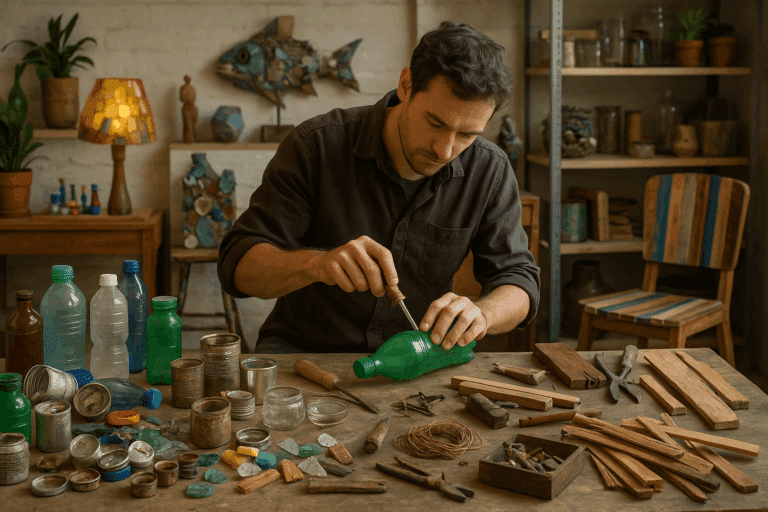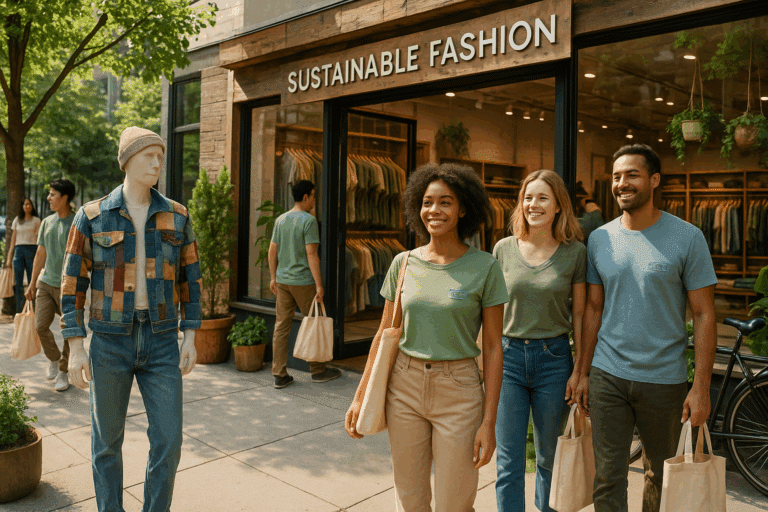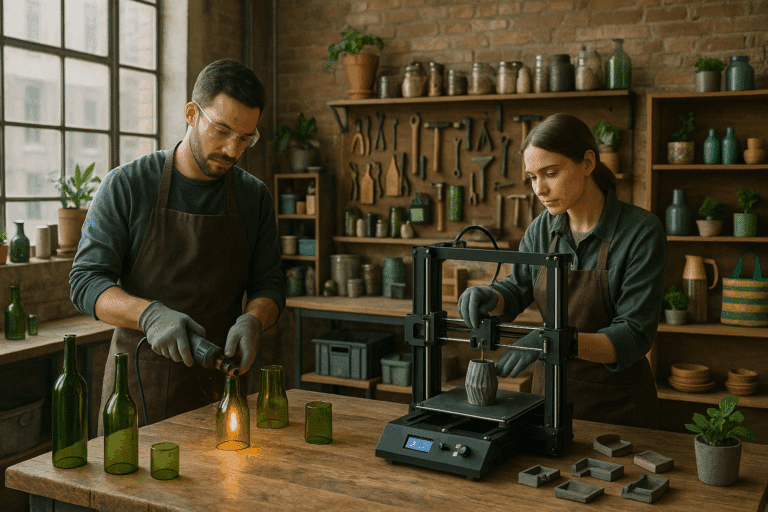But, what if one could combine the eco-friendly habit of recycling with this green thumb lifestyle? This post will provide an innovative perspective on transforming your living space into a sustainable home garden with “Grow Green: Transform Your Space with Plastic Bottle Planters.”
The modern household generates an astonishing amount of plastic waste, and one of the most common culprits is the humble plastic bottle. While recycling is an effective solution, reusing these bottles in a creative and practical way brings an added layer of environmental responsibility. This post will delve into the exciting realm of using plastic bottles as planters, transforming them into functional, decorative elements for your home garden.
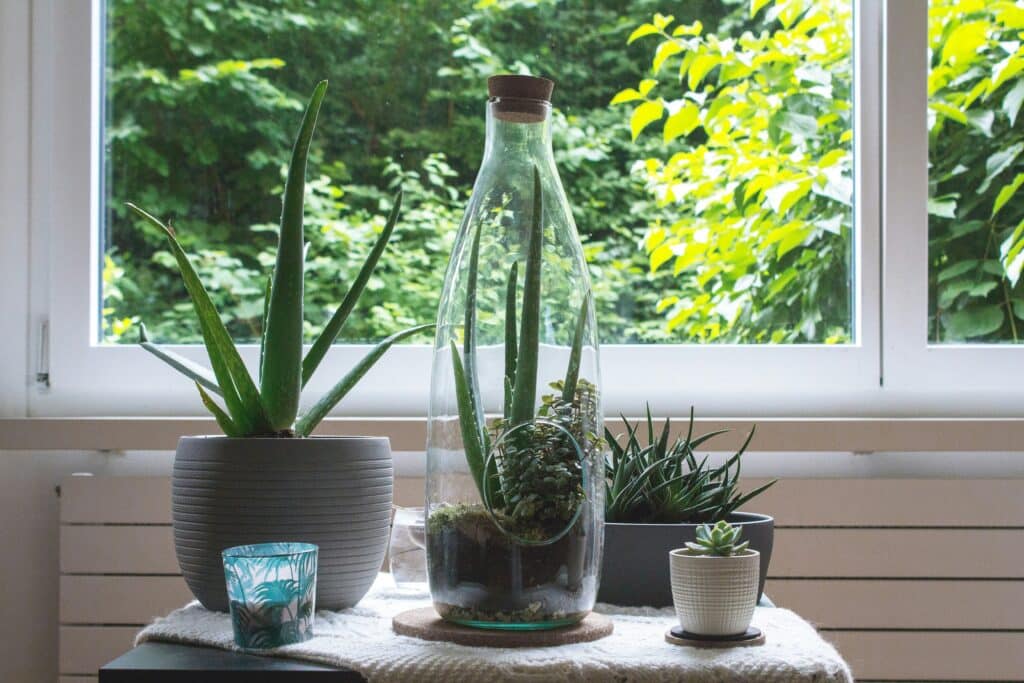
Starting a garden from scratch can be a daunting task, but when you add the aspect of sustainability, it becomes an empowering journey. In this detailed guide, you will discover how plastic bottle planters can not only add a unique aesthetic appeal to your home but also contribute to the well-being of our planet. From small, indoor herb gardens to larger, outdoor vegetable patches, plastic bottle planters offer a multitude of possibilities.
Not only does this approach foster a sense of eco-awareness, but it also provides an opportunity for creativity and self-expression. By the end of this guide, you will have all the knowledge and inspiration you need to undertake your sustainable home garden makeover with plastic bottle planters. Let’s ‘Grow Green’ together and create a more sustainable world for future generations.
Choosing the Right Soil and Fertilizer
Once your plastic bottle planters are ready and positioned in your garden layout, the next important decision involves the type of soil and fertilizer you will use. Soil selection should be based on the plant species you intend to grow. Most vegetables, herbs, and flowering plants thrive in well-draining soil that is rich in organic matter. A mix of garden soil, compost, and a bit of sand often provides the right balance of nutrients and aeration.
Avoid using heavy clay or overly compact soil, as it can hinder root growth and restrict water flow. Lightweight potting mixes are often the best choice for small container gardens like plastic bottle planters. These mixes typically contain ingredients such as peat moss, vermiculite, and perlite, which support both moisture retention and root ventilation.
Fertilization is another key element to successful container gardening. Since nutrients in containers get depleted faster than in open ground, it’s necessary to replenish them regularly. Choose organic or slow-release fertilizers that provide a steady supply of essential elements. Compost tea or diluted fish emulsion are also popular options for feeding plants naturally without the risk of burning roots. Regular feeding, combined with quality soil, ensures that your plants remain healthy, productive, and vibrant.
Selecting the Right Plants for Bottle Gardening
Not all plants are equally suited for growth in plastic bottle planters, which is why thoughtful selection is essential. Herbs such as basil, mint, parsley, and thyme do exceptionally well in small containers, requiring minimal space and maintenance. Leafy greens like lettuce, spinach, and arugula are also excellent candidates, especially for vertical gardens where shallow roots are not an issue.
When choosing vegetables, opt for dwarf or compact varieties. Cherry tomatoes, chili peppers, and baby carrots are perfect for bottle gardens, provided they receive enough sunlight and care. Flowering plants like marigolds, petunias, and pansies can add a splash of color and attract pollinators to your garden.
For bottle planters suspended vertically or placed in hanging arrangements, trailing plants like ivy, creeping Jenny, or string of pearls create a dramatic cascading effect. Succulents are another suitable option due to their low water requirements and adaptability to various container types.
Always consider the amount of sunlight your setup will receive. Plants with high light requirements should be placed in sunny spots, while those that prefer shade can be positioned in areas with filtered light. Matching plants to their ideal light conditions significantly increases their chances of thriving in a container environment.
Watering Techniques for Bottle Planters
Watering container gardens can be challenging, especially with plastic bottles, which tend to dry out faster than ground soil. The key is consistency and attentiveness. Most plants require moist but not waterlogged soil. Overwatering can cause root rot, while underwatering can lead to wilting and nutrient deficiency.
Early morning is the best time to water, as it gives plants the moisture they need throughout the day and reduces evaporation. During particularly hot or dry weather, you may need to water twice a day. It’s a good practice to check the soil by pressing your finger an inch into it—if it feels dry, it’s time to water.
To improve water retention, you can add a mulch layer of shredded leaves, straw, or small pebbles on top of the soil. This helps regulate temperature and slows down moisture loss. Self-watering systems can also be incorporated by connecting a wick or creating a reservoir at the base of the planter. Reusing the bottle cap to manage outflow is another clever way to maintain consistent moisture levels.
Decorating and Customizing Your Planters
Plastic bottle planters offer not only functional benefits but also creative opportunities. With a bit of imagination, these simple containers can be transformed into eye-catching garden accents. You can paint the bottles using waterproof acrylic paints or spray paints to match your garden’s theme. Use stencils to add patterns or label each planter with the plant name and care tips.
Texturing the surface with twine, fabric, or colored tape adds a personalized touch. You can also create animal shapes, cartoon characters, or geometric designs to make them more engaging—especially if you’re involving children in the gardening process.
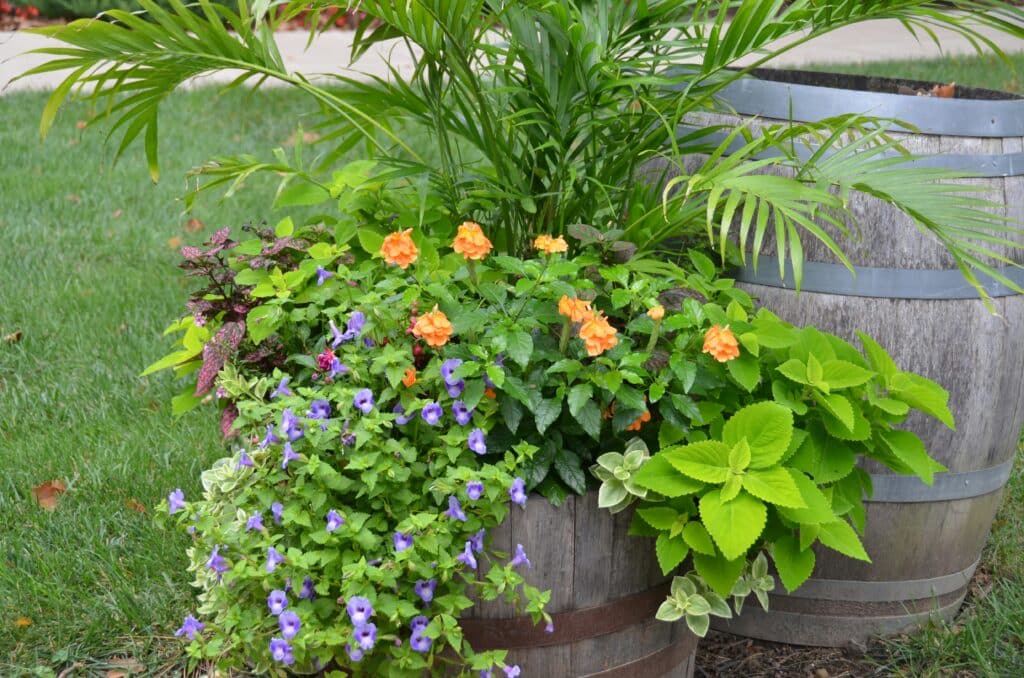
Beyond aesthetics, practical modifications can be made as well. Adding handles from string or wire can turn bottles into hanging planters. Attaching magnets or suction cups allows placement on metal surfaces or windows. This versatility makes bottle planters ideal for both indoor and outdoor gardening.
Organizing a Vertical Bottle Garden Wall
One of the most innovative ways to display your plastic bottle planters is by creating a vertical garden wall. This not only saves space but also transforms a blank wall into a vibrant green tapestry. Begin by mapping out your wall space and determining how many bottles you’ll need. Prepare the planters with equal spacing to ensure each plant has enough room to grow.
You can secure the bottles using hooks, ropes, or shelves. Pallets and mesh grids make great backboards for vertical gardens. Another method involves cutting windows into each bottle and threading them through ropes horizontally. Ensure that each bottle has proper drainage and that water dripping from the top planter doesn’t oversaturate those below.
Arrange plants based on their light and water needs. More resilient and sun-loving varieties should go at the top, while moisture-loving plants can be placed at the bottom where water collects more readily. This tiered system mimics natural ecosystems and helps distribute resources more efficiently.
Encouraging Pollinators in Your Bottle Garden
Even small gardens benefit from the presence of pollinators such as bees, butterflies, and hummingbirds. These visitors play a crucial role in plant reproduction, particularly if you’re growing fruits or vegetables. To attract them to your bottle garden, consider incorporating pollinator-friendly plants like lavender, sunflowers, or echinacea.
Position these flowering planters strategically around the garden to act as beacons. Avoid using chemical pesticides or herbicides that could harm pollinators. Instead, opt for natural pest control methods such as neem oil or companion planting.
Providing a small water source, like a shallow dish with stones, can also encourage pollinators to stay longer. The more diverse your plant selection, the more inviting your garden becomes to beneficial insects. With a thriving pollinator presence, you’re likely to see improved plant health and productivity across your bottle garden.
Managing Common Challenges in Bottle Gardening
While bottle gardening offers many advantages, it does come with its set of challenges. One of the most common issues is overheating, especially in transparent PET bottles. If your garden receives strong sunlight, consider wrapping the bottles in fabric or paper to reduce temperature spikes and protect delicate roots.
Another concern is limited root space. Some plants may quickly outgrow their containers, leading to stunted development. Regularly check your plants for signs of being root-bound, such as yellowing leaves or roots growing out of drainage holes. When needed, transfer them to larger containers or trim the roots to encourage healthy growth.
Pest management in small planters can be tricky due to limited space and airflow. Keep a close eye on plant leaves and stems, especially under foliage. Use diluted soap sprays or introduce predator insects like ladybugs to control aphids and mites.
Nutrient depletion is another frequent issue. Unlike in-ground gardens, where plants can spread their roots and access more minerals, bottle gardens rely entirely on the nutrients you supply. Rotate crops when possible, enrich the soil with compost, and avoid over-fertilizing, which can build up salts and harm roots.
Choosing Plants for Your Planters
The type of plants you choose for your plastic bottle planters largely depends on the growing conditions they require and the available space. Some great options include herbs like basil, mint, and parsley, vegetables such as lettuce and spinach, or flowers like marigolds and petunias.
Maintaining Your Garden
Keeping your garden healthy and thriving requires regular maintenance. This involves watering the plants appropriately, ensuring they get the right amount of sunlight, and feeding them with organic fertilizer. Regularly check for any signs of disease or pests and take immediate action if detected.
Benefits of Plastic Bottle Planters
In addition to providing a sustainable solution for your garden, plastic bottle planters offer a host of benefits:
- Cost-Effective: Using plastic bottles as planters is a low-cost alternative to traditional pots. You’re essentially recycling waste materials and turning them into something beneficial.
- Portable: Plastic bottle planters are lightweight and easy to move around, allowing you to rearrange your garden whenever you want.
- Transparent Growing Medium: PET bottles allow you to observe the root growth and soil condition, helping you better understand your plant’s needs.
In conclusion, transforming your space with plastic bottle planters for a sustainable home garden makeover is a creative, eco-friendly, and cost-effective endeavor. It not only beautifies your space but also contributes to waste reduction and environmental preservation.
Conclusion
In wrapping up, “Grow Green: Transform Your Space with Plastic Bottle Planters for a Sustainable Home Garden Makeover” truly encapsulates the importance of sustainability in today’s world. This article offers a remarkable insight into the world of DIY gardening, showing us that it’s not only possible but also surprisingly easy to create a green oasis with everyday items like plastic bottles.
Not only does this approach help to repurpose our plastic waste, but it also contributes to a healthier, more eco-friendly environment. It creates a win-win situation where we can enjoy the benefits of gardening and reduce our environmental impact. This is indeed a call to action for all of us to be more conscious about our consumption habits and to think about creative ways to recycle, reuse, and reduce waste.
Moreover, this article highlights that the aesthetics of our homes and gardens need not be compromised for sustainability. With a dash of creativity and a bit of effort, our spaces can be transformed into green sanctuaries. All in all, the Grow Green philosophy invites us to explore sustainable gardening practices, creating a unique blend of functionality, aesthetics, and environmental consciousness.
By integrating these practices into our everyday lives, we empower ourselves to become stewards of the planet—starting right at home. Whether you have a sprawling backyard or a small balcony, plastic bottle planters provide an accessible and effective solution to green living. The transformation begins with a single bottle, but the impact can ripple out far beyond, inspiring others to rethink waste and rediscover the joy of growing something with purpose.
Green Up Your Space with Bottle Planters

